Inle Lake, not only one-leg-rowing fishermen
Inle (or Inlay) in Burmese means the large lake, is located in Nyaungshwe Town of Taunggyi District of Shan State, 650km away from Yangon and there is a 50-minute direct flight from Yangon. This freshwater lake with local people mainly living on the lake is a popular tourist destination of Myanmar, served by Heho airport. It is the second largest lake in Myanmar with about 116km2 width of surface, and a peak at 880m. Inle Lake has been the Myanmar's first designated place of World Network of Biosphere Reserves since 2015.
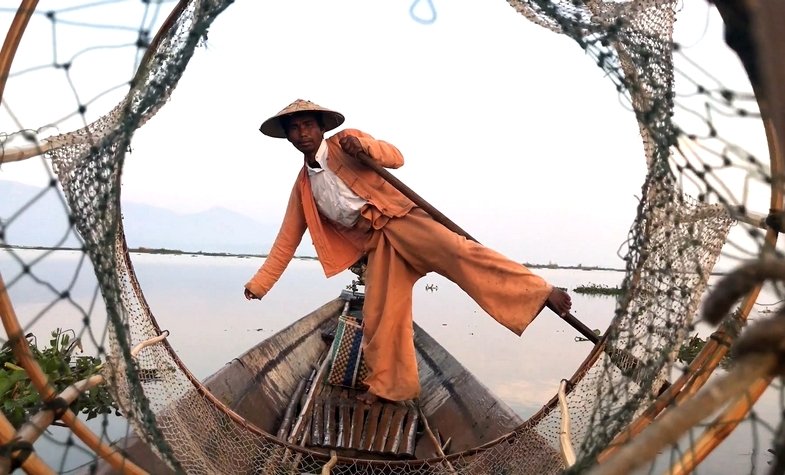
Inthar Fisherman - An Inle Lake's icon
Inle Lake is a place that not only has sublime scene but also is inhabited by the Inthar people - a tribe in Myanmar. Inthar in Burmese language means “the people living on the lake". There are about 70,000 Inthar people living here. All their social activities were taken place in this lake for thousands of years. They build houses and earn their life on the lake. One of their highlight innovations is practice of cultivation plants on water by making up floating rafts from water hyacinths and mosses then using bamboo sticks to fix them. These floating fields will be up and down follow up the water level of the lake. The specific dish here is salad with very good tomato planted on the field. Besides doing farming, local people here also live on fish catching in the lake.
The fishermen sail the dugout canoe – the men use one leg only to row the boat while women sit at the middle of the boat and use hands to row – casting the nets on the lake in the Eastern dawn has become unique cultural feature of this land and the great image for any tourists.
Inle not only attracts tourists with the pristine beauty and friendly-to- nature resorts, but also be the destination for many tourists who want to learn the energetic cultural land with a long history.
There is a land in the Southewest of Inle Lake known as the Bagan of Shan State. It is the ancient city Indein, the capital under the Shan Dynasty in the 11th century. The old architecture of houses with high roof top and made-red-hot bricks with the typical culture of ethnic minorities like Padaung – people with long neck race makes the city a very unusual excellence beauty.
In the complex, you will also see the Nyaung Ohak and the ruins of Shwe Inn Thein – a religious complex near the port - with lust green trees around.
While visiting the lake, you will live in the local life in morning market of Ywama village. The boat pulls under the long wooden bridge over the canal, you will walk through the fields and see people carrying basket in their head, handling the sedge basket, buy and sell eventfully. The boat trip will take you to traditional villages such as making cigars, weaving yarn from lotus… around the lake.
And don’t miss the impressive sunset moments here. The orange glow, brightening a whole corner of the sky, gradually dives to the land makes the scenery shimmering. You will be sobbing, immersed in this peaceful and dreamlike space. Bringing some snack with the favorite music, enjoy those brilliant moments with friends and family is always an unforgettable memory.
Maybe you like our tours: | Vietnam Myanmar Thailand tour | Vietnam Cambodia tour package | Southeast Asia tour
Hpaung Daw U Pagoda
Hpaung Daw U Pagoda or Hpaung Daw Oo or Phaung Daw Oo is the most notable Buddhist site on the lake that is you cannot miss it while you are here. The legend said that the 5 Buddha statues were sank to the bottom of the lake while parading in a boat on the river but then it were found back at the pagoda. Although only men is permitted to offer the gold leaf to these five Buddha statues, their original form could not be seen because of too much gold leaf was covered on. They have been removed leaf to avoid the overweight condition. They are believed that King Alaungsithu brought them to this the lake. Please always place a small thing near the statues then take it back and place it on the alter at home to show the respect for Buddha and their ancestors.
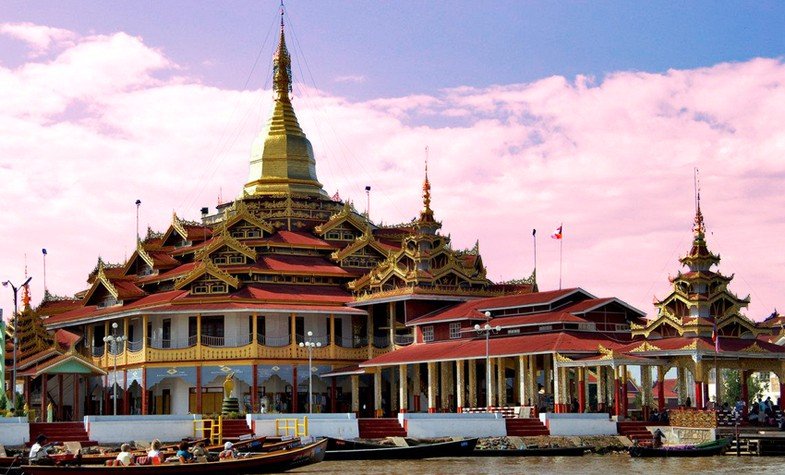
Hpaung Daw U Pagoda
Nga Phe Kyaung Monastery
Built on stilts in 1850s on the lake, Nga Phe Kyaung Monastery is considered as the most ancient and largest wooden monastery here. When you visit the Hpaung Daw U Pagoda, it is very convenient and exciting to visit this religious point. After about 25 minutes riding on boat, you will reach the house was built with traditional technique and architecture from huge pieces of wood from teak. Thanks to the collection of Buddha statues respectively in Shan, Tibetan, Bagan, and Inwa style and many cats which are trained to jump through hoops living here, this is the place worth to visit. The monastery also has other name “Jumping Cat Monastery”.
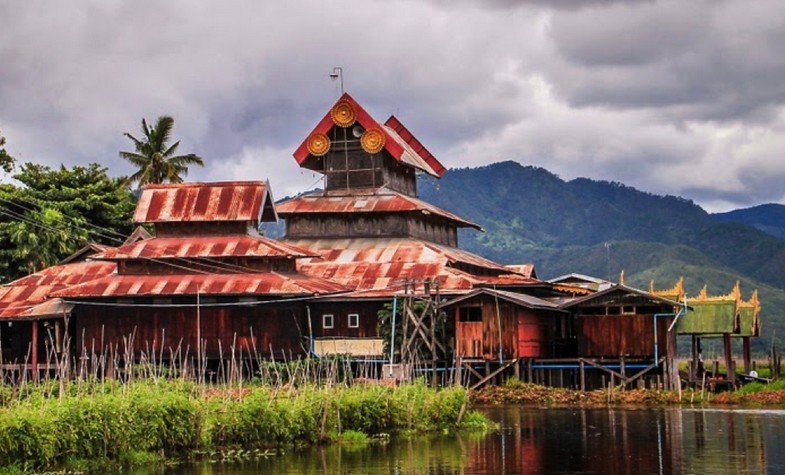
Nga Phe Kyaung Monastery
Kakku Temple
Although Kakku Temple is in a newly opened temple complex but it is an ancient one with long history. The temple may date back to as early as the 3rd century BC - when Ashoka - the Indian emperor - built a great number of monasteries, pagodas and temples in South East Asia.
This ancient temple has about 2,500 unique Shan-style stupas which have similar size and shape. They were made of brick and plastered with stucco and regretfully there were number of towers have crumbled off over the years.
The stupas stand in long rows closely put together within a square field and many of them have a top element shaped like an ornamental umbrella. There is a 40m high main tower standing in the center and many smaller ones which trees and bushes growing out of them are surrounding. Staying here you will be ecstatic with views of the mountains in the distance and this is the great place to learn about long Buddhist’s history.
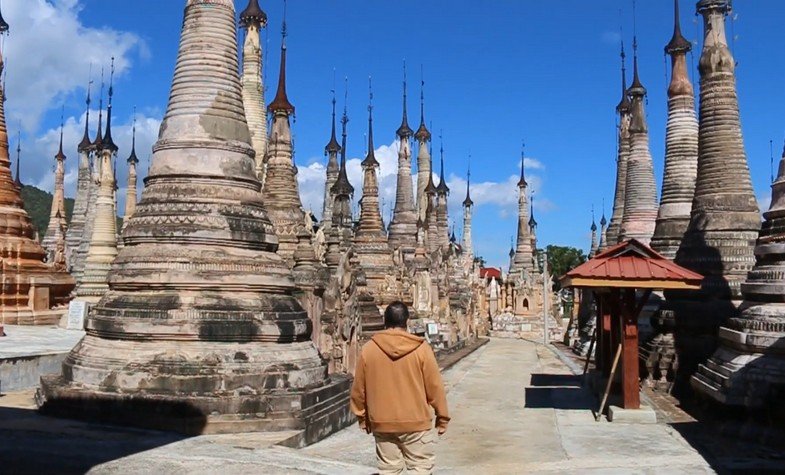
Kakku Temple
Taunggyi Central Market and Aythaya Vineyard
Why don’t you come to Taunggyi Central Market to visit the local atmosphere with learning how to bargain and get the local fresh produce such as Burmese sweet tea from Shan Hill, Shan noodles...
Or you can visit Aythaya Vineyard - the first vineyard in Myanmar where produce five different wines from local grapes – to enjoy delicious glass of grape wine which is the Myanmar’s finest wine, one of the best in the Southeast Asian region.
Pindaya
Pindaya is a small town which well-known not only for the limestone caves where thousands of Buddha statues have been dedicated for worship over the centuries but also its attractive lakeside setting, as well as the traditional Shan paper umbrellas manufactured here.You will experience the daily local life here by interact with plain country people here before taking to the skies for spectacular countryside view with hot air balloon.
After about 45 minutes walking from the town, you will reach the Pindaya cave located on a limestone mountain which is deep in the hillsides and contain 6,000 Buddha statues from small to big size. They are made of plaster, bronze or white marble and covered by gold leaf. Although only one in three caves can be visited, this is the Buddhist pilgrimage site and very interesting tourist attraction that the area offers.
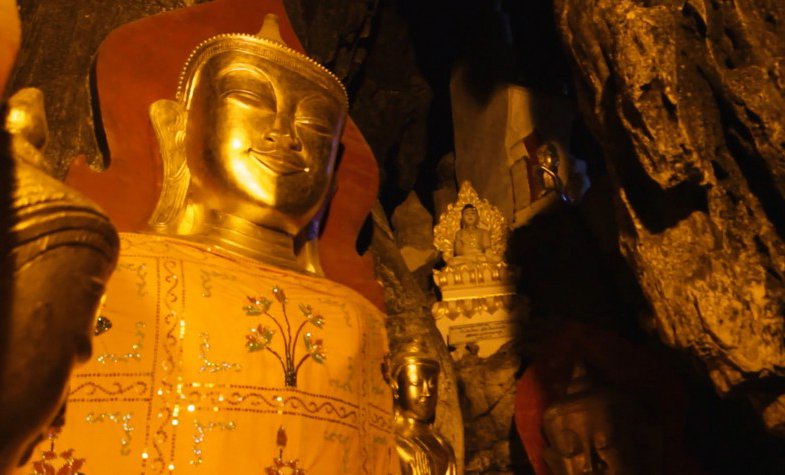
Pindaya Cave
Sulamuni Pagoda
Sulamuni Pagoda was built in 1994 in Taunggyi city in the occasion of commemorating one-hundred-establishment the city.
It is a vast white pagoda that has the gilded corncob stupa same as the Ananda temple in Bagan. Because it is in the hill, you can have the panorama view of the city from here. It has 4 sided Buddha statues and many reliefs in different positions inside will let you know well about the religious cultural space of the area.
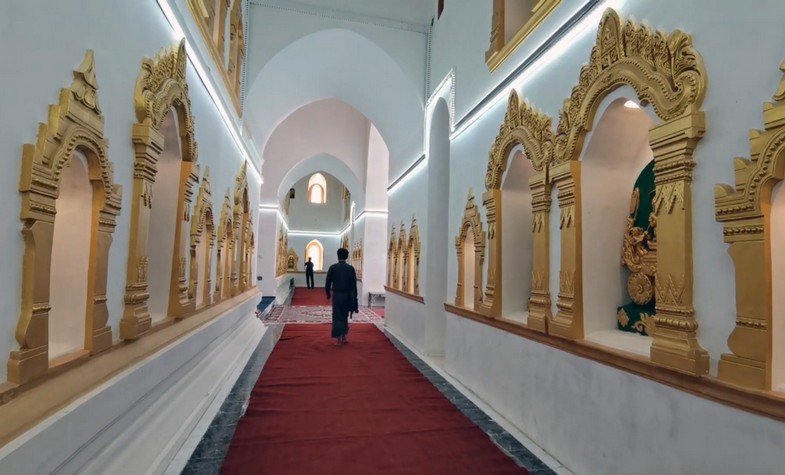
Sulamuni Pagoda
Lotus, Silk and Cotton Hand Weaving Centre
Coming to Inle, besides visiting the floating villages and specific temples, you definitely cannot miss the unique textile factories in Kyaing Khan and Paw Khon village. Lotus weaving has benefited from tourism industry and is one of main work makes people living here. The boat trip will bring you to the Khit Sunn Yin Lotus, Silk and Cotton Hand-Weaving Centre where you may first time to see how the lotus pieces are hand-woven.
Lotus stems will be cut into small pieces and their fibers will be extracted by hand using a knife before the fibers are moistened and rolled together to form threads. The patient women will spin and weave the raw, pure lotus silk into spools by using a hand-turned wheel. To get colored fabric the weavers dye them using lotus leaves, bark, seeds, jackfruit, and other natural materials before they use the old hand looms to turn lotus threads into products. The whole process is very meticulous, so no wonder the finest lotus products are among the most expensive textile products in the world. Such wonderful the amazing skilled artisans who weave this kind of magic.
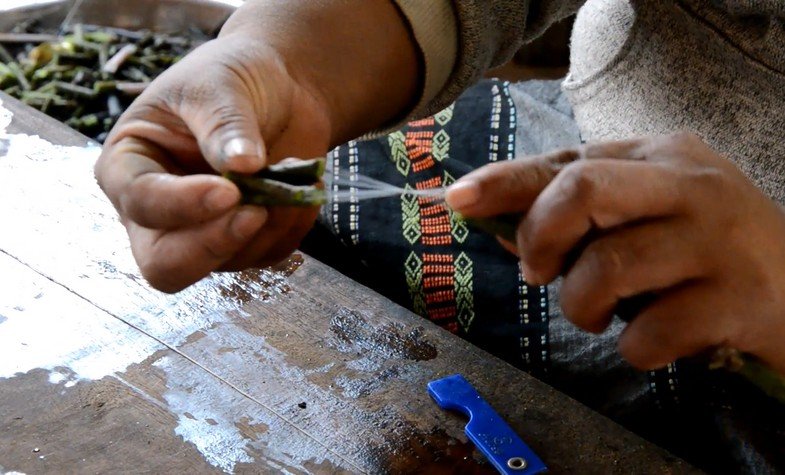
Lotus-fibers-extracting requires an experienced artisan
***
Travel Authentic Asia Company is your best choice for discovering the beauty of Southeast Asia. Our experienced and knowledgeable travel advisors are committed to helping you create a tailor-made tour and extraordinary experiences in this majestic region.
If you're looking for an authentic cultural experience, do not hesitate to contact Travel Authentic Asia to choose a Myanmar tour, Southeast Asia tour package or to customize your own style tour to South East Asia.

